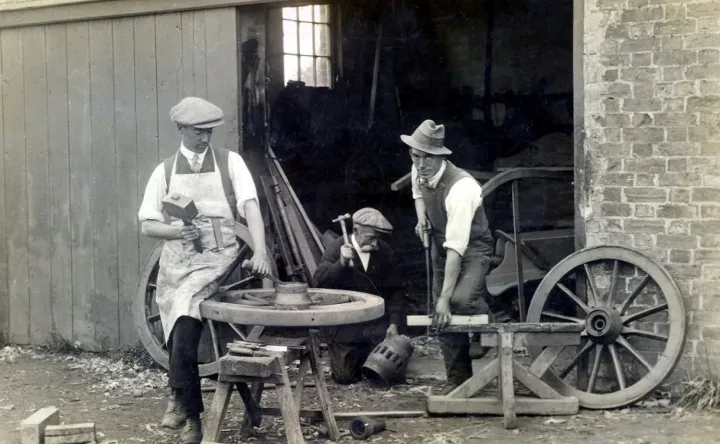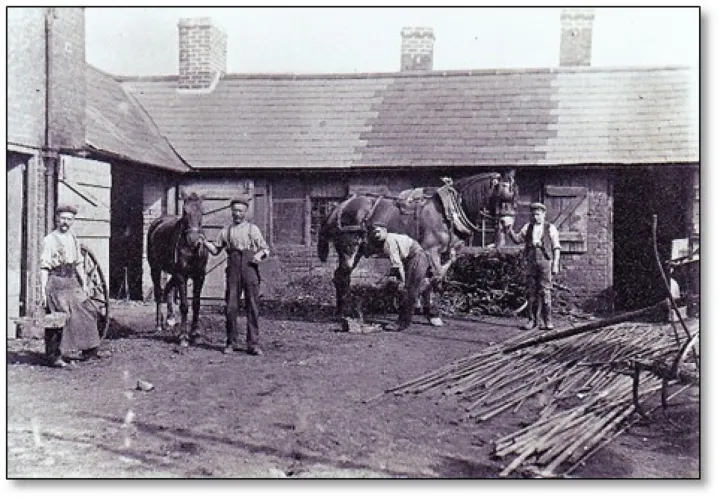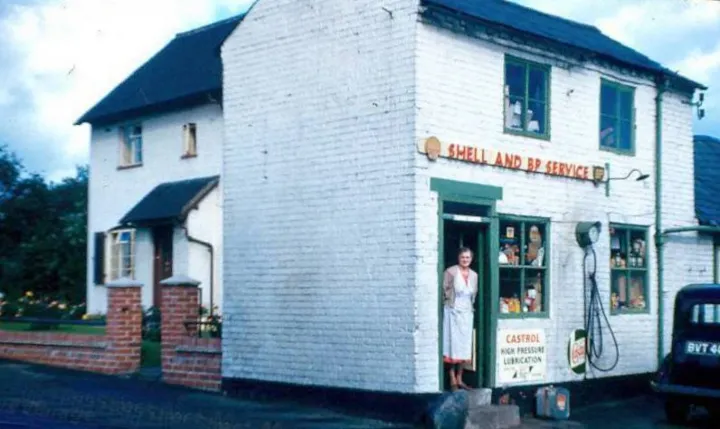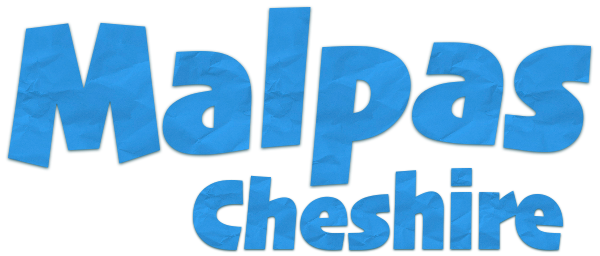The Village Blacksmith
The Village Blacksmith
Nowadays blacksmiths are not such a common sight, although we are fortunate to still have working smithy at Hampton owned by the prize-winning Hughes family.
They still carry on a busy farriery trade, as well as all the other work traditionally undertaken by blacksmiths such as repair of farm machinery, farm gates, fencing, ornamental metalwork, and suchlike.
Many smithies were passed down through families – the 1807 will survives of John Hughes, one-time Malpas blacksmith.
'The Smithy at Ebnal was owned by William Hughes, who, with his brother Walter, also a blacksmith, adapted to the changing times but still provided a service for the shoeing of horses, and also the process of hooping wooden wheels with 'metal tyres'.

Most villages of any size would once have had a smithy.
From the Tithe Awards of the 1840s it is possible to locate around twenty such establishments in the My Village News area.
They include those at Bickerton, Clutton, Cuddington, Farndon, Haughton, Marbury, Peckforton, Spurstow, Stretton, Tattenhall and Tushingham.
.
A poem of 1824, describing the trades of Bulkeley states: 'In working steel and iron well/I need not of Ralph Mottram tell'.
In 1872 the Whitchurch Herald published a report, in verse, of what appears to have been some form of blacksmiths' trade union meeting, at the 'Red Lion' in Malpas.
It starts 'Eighteen blacksmiths, strong and mighty/Met in famous Malpas town' and goes on to name some of those attending, including:
Clutton Charley,
Burwardsley Sammy,
Johnny of Threapwood,
Joey Iscoyd
Tilston Jimmy.
The meeting had been called to discuss a steep increase in the prices of their raw materials: 'Coal and iron both have risen/And our work it does not pay'.
Malpas Harry, who chaired the meeting, suggested as a solution:
'Twenty-five per cent for light work/Extra, lads, we must be paid/Shoeing contracts all abolished/Who won't comply he must be made'.
We don't know the outcome – the final verse merely states: 'All the rest they said but little/But you know they thought the more/And at length they all skidaddled/ Never to be heard of more'!
As the widespread use of horses for many purposes lessened from the First World War onwards, giving way to the increasing use of motor vehicles and tractors, so the need for the blacksmith's traditional work slowly declined.
However, his skill working with metal stood him in good stead to cope with the demands of motor vehicle repairs and, in some villages, the smithy was slowly transformed into a garage. Such was the case in places like Threapwood, Beeston and Malpas.
In the 1970's the smithy at Hampton Post was still being operated by the O'Donnell Family, and I recall using their services to fabricate some metal components and to obtain some large bolts for a project I was working on.
We still have the working smithy on Mates Lane operated by the Hughes Family.
The bulk of their work now is about carrying out repairs to farm equipment trailers, or fabricating wrought iron gates.
One of their recent pieces of work was to extend the width of the Recreation Ground gates
However they still shoe horses which is a spectacle worth watching.
Horses are still a frequent sight in our part of Cheshire, in our fields and on our country roads, but now they are mainly used for leisure riding, racing or eventing.
The hugely successful Bolesworth International Horse Show, and the many other equestrian events in our area all continue to provide work for the farrier blacksmith, although the service nowadays is likely to be a mobile one, and possibly provided by a woman rather than a man.
.
Local Smithy locations:(1836 – 1841 Tithe Maps)
Hampton
The smithy at Hampton was situated beyond Hampton Post cross roads on Shay Lane. It is now a residential development named as Old Smithy House.
Macefen
The Macefen smithy was listed in the Tithe Map apportionment as Tushingham
It was located on the old A41 opposite the junction from Bradley to Maesfen just before the drive to the Barhill Farm.

In 1921 the Macefen smithy was being operated by Edgar Clutton

The above invoice shows that the Smithy was originally in the name of JOHN GREEN, but it has been overwritten with the name of the last blacksmith who operated there, EDGAR CLUTTON who was the father of GEORGE CLUTTON, who's wife Mrs Clutton ran Scottish Country Dancing classes in Malpas.
.
Malpas
There were two smithies in Malpas recorded on the Tithe maps.
One was situated on the corner of Well Street and Well Avenue
The other one was on Cross o' th' Hill Road where the residential dwelling of The Oaks now exists.
Illustrated on the 1836 – 1841 Tithe Maps in Old Hall Street Malpas opposite the entrance to The Old Hall were 10 cottages.
These were later demolished and a smithy was built.

The Smithy was then replaced by a garage to serve the growing motor transport.
The Smithy was run by Lloyd Furber in the early 1900's and eventually was converted into a service garage with petrol pumps by his son Harold Furber. Later his two sons Jack and Eric took over the business.

.

Tilston
The Smithy was next to where the Fox & Hounds Public Inn stood. This is now part of a residential development.
Stretton
The Smithy at Stretton was previously located on the site of the current residential dwelling of Rock Cottage near to the minor road to Stretton Water Mill.
Article produced and published by Chris Whitehurst
30th December 2023
Acknowledgments:
Information provided by David Hayns, and Bill Coffin
Extracts from article "Forging memories" published by My Village News in March 2012
Quick Links
Village Map
Get In Touch
MalpasOnline is powered by our active community.
Please send us your news and views using the button below:

